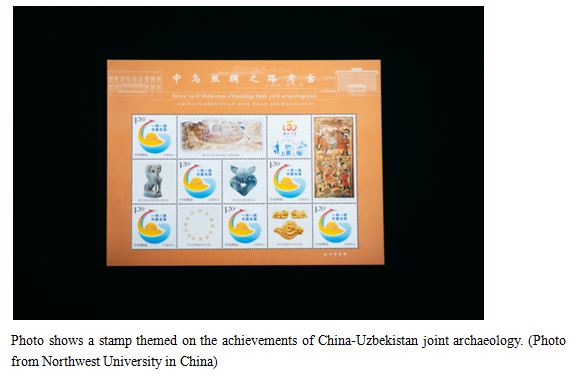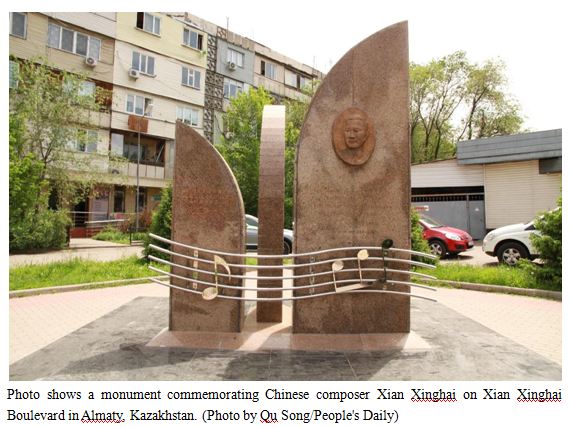By Qu Song, People’s Daily
In the long river of history, the ancient Silk Road has opened a window for China-Central Asia exchanges and written a number of stories of mutual learning between civilizations.
As the Belt and Road Initiative (BRI) gathers strength, the people-to-people and cultural exchanges between China and Central Asia have become closer and more frequent and yielded fruitful results.
From student exchanges to joint archaeology, from the mutual translation of books to the co-production of movies, the thousand-year-old friendship between China and Central Asian countries has become more deeply rooted and long-standing.
Over the past decade or so, China and Central Asian countries have achieved remarkable progress in the cooperation on the conservation of cultural relics.
Since 2012, a joint team of archaeologists from China and Uzbekistan has so far launched eight excavations at the ruins of the Mingtepa ancient city in Uzbekistan, achieving a series of important archaeological findings.
In June 2014, the property named “Silk Roads: the Routes Network of Chang’an-Tianshan Corridor” jointly submitted by China, Kazakhstan and Kyrgyzstan was inscribed on the UNESCO World Heritage List. It is the first Silk Road heritage recognized on the list and also the first UNESCO heritage site bid jointly applied by China and other countries.
Guided by China’s National Cultural Heritage Administration, the International Council on Monuments and Sites International Conservation Center-Xi’an provided technical guidance for Kazakhstan, Kyrgyzstan, Tajikistan and Uzbekistan in bidding for “Silk Roads: Fergana-Syrdarya Corridor” to become a UNESCO World Heritage Site since 2019.
Central Asia is where the BRI was initiated. Under the framework of the initiative, China and Central Asian countries have witnessed promising cooperation on energy, infrastructure, agriculture, water conservation and power. The cooperation not only brings tangible benefits to the people, but also expands new space of people-to-people and cultural exchanges between the two sides.
On April 26 this year, the opening ceremony of the third school aided by Power Construction Corporation of China to Tajikistan was held in Danghara, capital of Tajikistan. The ceremony was attended by Tajik President Emomali Rahmon, as well as multiple Tajik government officials. Expressing his satisfaction with the quality of the school, Rahmon spoke highly of the contribution made by the Chinese enterprise to Tajikistan’s public welfare.
The first Luban Workshop in Central Asia was put into use in Dushanbe, capital of Tajikistan at the end of 2022. The Chinese vocational training program is also currently under construction in Kazakhstan and Uzbekistan.
Training talents to boost local development, the program has built a technical station for promoting common development and a bridge of cultural exchanges and people-to-people bonds between China and Central Asian countries.
Learning Chinese is getting trendy in Central Asia in recent years as more young people in the region are going to China for study and business.
Kazakhstan is currently home to five Confucius Institutes that offer Chinese language courses for more than 3,000 people each year.
Sholpan Zharkynbekova, professor of the Department of Theoretical and Applied Linguistics at Kazakhstan’s L.N. Gumilyov Eurasian National University, told People’s Daily that the demand for Chinese language speakers is on the rise in Kazakhstan’s job market, and the people in the country are having an increasingly higher passion for learning Chinese.
In Almaty, Kazakhstan’s largest city, there is a street named after famous Chinese composer Xian Xinghai. Not far from it, there’s also a street named after Kazak composer Bakhitzhan Baykadamov.
In May 2019, the first film co-produced by China and Kazakhstan The Composer hit the big screen, telling the stories of the close friendship between the two composers forged in wartime.
Kazakh producer of the film Serik Zhubandykov said Kazakhstan-China cooperation not only spreads the historical stories of the friendship between the two countries, but also introduces frontier development philosophies and filming technologies to Kazakhstan’s movie industry.
Recently, a culture and tourism festival kicked off in Zhangye, northwest China’s Gansu province. Over 100 pictures depicting the natural beauty and splendid cultures of China and Central Asian countries were exhibited at the event.
This February, the Ministry of Tourism and Cultural Heritage of Uzbekistan discussed with China’s Shaanxi Tourism Group to strengthen tourism cooperation, hoping to learn from China’s experience to promote Uzbekistan’s tourism development.
Kazakh Sinologist Klara Khafizova told People’s Daily that Central Asian countries and China have achieved tremendous progress in their cooperation on science and technology as well as education.
Mutual visits between experts and scholars, international conferences, academic exchanges, joint research programs and book translation programs have become regular between the two sides, she said, adding that BRI development has injected new impetus into the cultural and people-to-people exchanges between Central Asian countries and China.



















